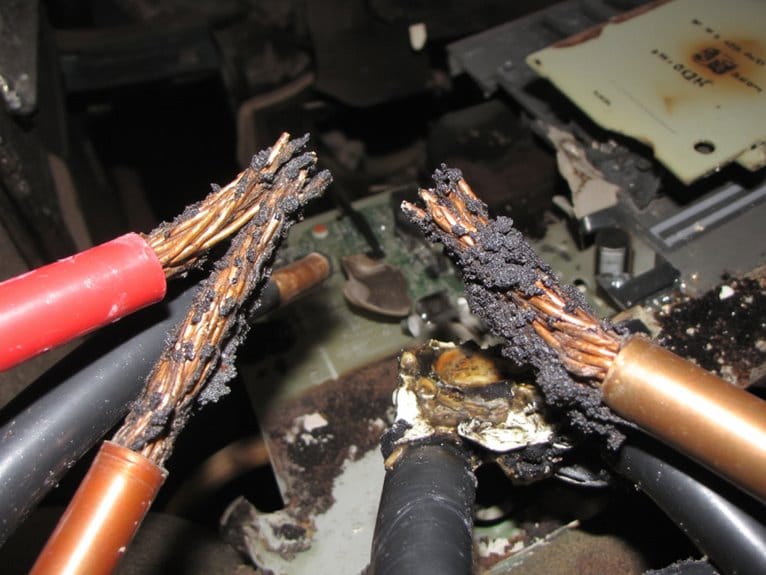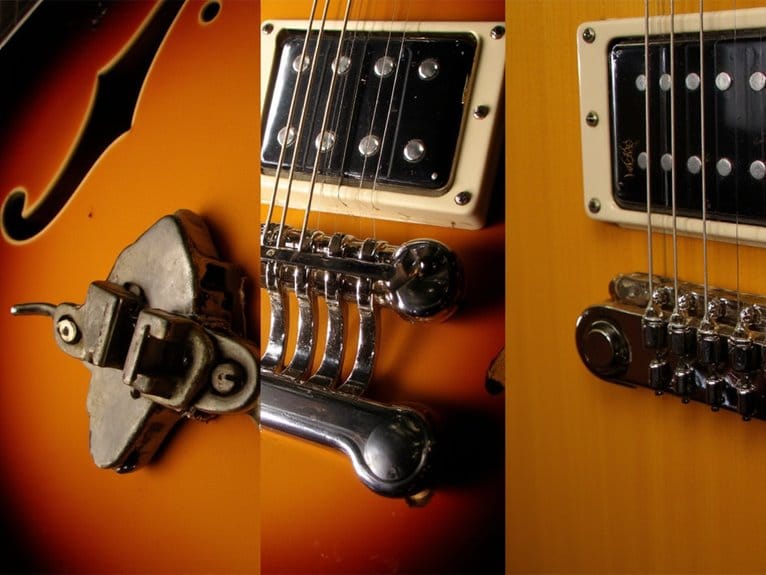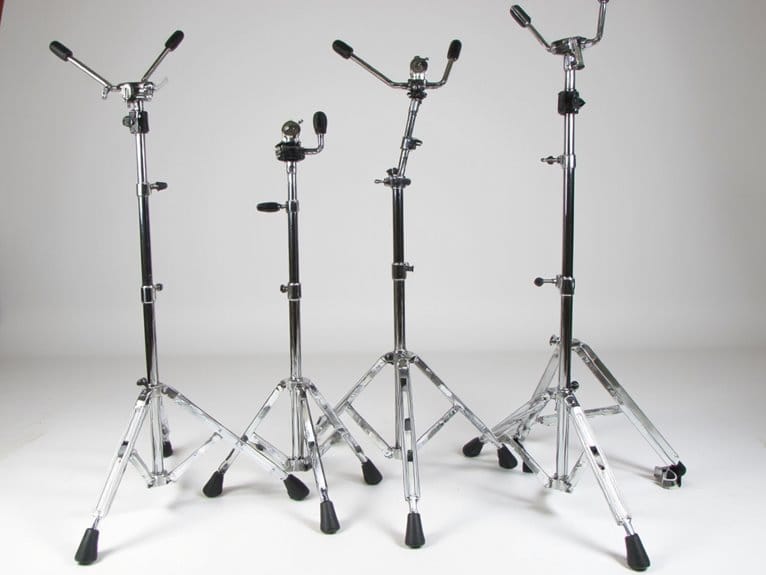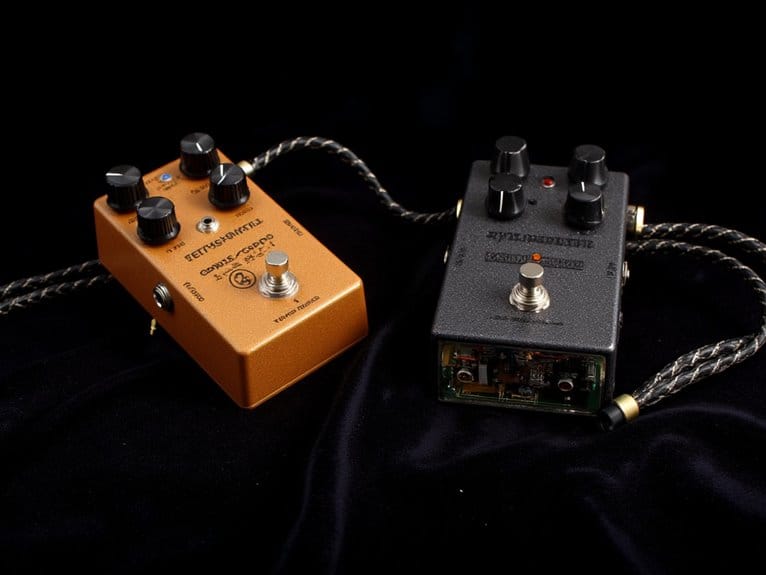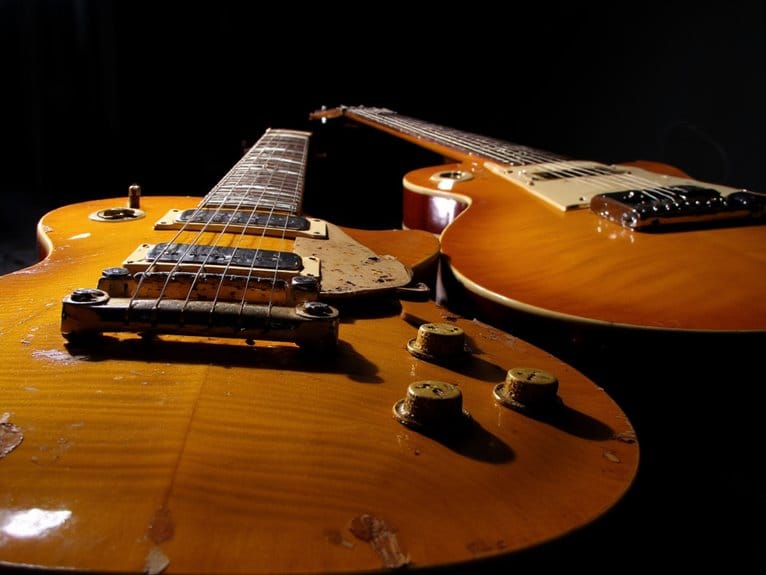Speaker Impedance Matching: Avoiding Costly Mistakes
You’ll avoid costly amplifier damage by matching speaker impedance ratings to your amp’s specifications, as mismatched loads create excessive current flow that stresses components and degrades sound quality. Modern solid-state amplifiers tolerate some mismatch better than tube amps, which require exact matching to prevent flyback currents, but any impedance mismatch reduces efficiency and introduces distortion over time. Understanding how parallel connections halve impedance while series connections double it guarantees you’ll protect your investment and maximize performance.
We are supported by our audience. When you purchase through links on our site, we may earn an affiliate commission, at no extra cost for you. Learn more.
Notable Insights
- Always match speaker impedance ratings with your amplifier’s specifications to prevent equipment damage and excessive current flow.
- Calculate total impedance before connecting multiple speakers, remembering parallel connections halve impedance while series connections double it.
- Avoid connecting speakers below your amplifier’s minimum impedance rating as this causes dangerous overcurrent conditions.
- Use matching networks or transformers to compensate for impedance mismatches and frequency-dependent variations in complex audio systems.
- Monitor impedance ratios especially with tube amplifiers, which require exact matching to prevent harmful flyback currents.
Understanding the Fundamentals of Speaker and Amplifier Impedance
When I first started diving into audio systems, I’ll admit the whole impedance concept seemed like electrical voodoo.
But understanding how speakers and amplifiers interact through impedance is actually fundamental to getting great sound without frying your gear. Think of speaker resistance as the electrical opposition your speakers present to current flow, measured in ohms, which directly affects how much power gets transferred from your amplifier.
Modern solid-state amps use low output impedance for voltage control, making traditional power transfer matching less critical than it was with older tube amplifiers.
However, you’ll still need to respect impedance relationships because mismatched loads can cause distortion, reduced performance, or expensive equipment damage when current demands exceed your amplifier’s capabilities. Keep in mind that impedance can vary with frequency of the audio signals your speakers are reproducing.
Common Misconceptions That Lead to Audio System Problems
Over the years, I’ve watched countless audio enthusiasts make costly mistakes based on widespread myths about impedance matching, and honestly, these misconceptions are so persistent that even experienced technicians sometimes fall for them.
Understanding these key concepts helps prevent expensive equipment damage and poor sound quality. Many believe low-volume operation makes impedance mismatches safe, but any mismatch reduces efficiency and stresses components over time. Mismatched impedance can lead to sound quality degradation, including distortion, low volume, and uneven frequency response.
Another myth suggests higher speaker impedance automatically means better sound, when ideal matching actually provides the best fidelity.
Here’s my most important troubleshooting tip: tube and solid-state amplifiers react differently to mismatches, with tubes tolerating lower impedances while solid-state amps handle higher loads better.
Technical Methods for Achieving Proper Impedance Balance
After years of diagnosing impedance problems in audio systems, I’ve found that achieving proper impedance balance requires understanding five fundamental technical approaches, each with distinct advantages depending on your specific application.
First, transformer configurations excel at converting impedances by scaling voltage and current ratios, with impedance ratios equaling the square of voltage ratios across windings.
Second, matching networks using resistors, capacitors, and inductors create L-networks or T-networks that compensate for frequency-dependent reactive components. Professional audio interfaces often incorporate these matching circuits to ensure optimal signal transfer between components.
Third, you’ll want to align speaker ratings with amplifier specifications, typically keeping speakers at or slightly above amplifier impedance ranges. Valve amplifiers require particularly careful attention since they need correct speaker loads to avoid equipment damage.
Fourth, voltage matching through low output impedances below 150Ω paired with high input impedances around 10kΩ guarantees constant signal voltage. Achieving zero-latency monitoring requires careful impedance matching between all components in the signal chain to prevent timing delays.
Finally, maintaining proper output-to-headphone impedance ratios prevents distortion. These ratios become particularly critical in high-power applications where reflection coefficients can cause repeated signal bounces and significant energy loss throughout the system.
Preventing Equipment Damage and Performance Issues
While proper impedance matching enhances your audio system’s performance, I’ve witnessed countless expensive amplifiers destroyed because owners didn’t understand the serious risks that impedance mismatches create.
Connecting speakers below your amplifier’s minimum impedance rating causes excessive current flow, potentially damaging output stages or creating fire hazards. I’ve learned that tube amplifiers require exact matching to prevent catastrophic flyback currents, while solid-state amps rely on protection circuits that aren’t foolproof.
Monitoring impedance becomes critical when wiring multiple speakers, since parallel connections halve impedance and series doubles it.
Beyond equipment damage, mismatches degrade frequency response and increase distortion, undermining your investment in quality components.
Always calculate total impedance before connecting anything, enhancing sound quality while protecting your gear.
On a final note
You’ve now got the essential knowledge to match impedances correctly, preventing those expensive mistakes that’ll drain your wallet and damage your gear. I’ve seen too many people learn this lesson the hard way, burning out amplifiers or speakers because they skipped the fundamentals. Don’t let misconceptions guide your decisions-use proper measurement techniques, understand your equipment’s specifications, and you’ll enjoy years of peak performance without costly repairs.

